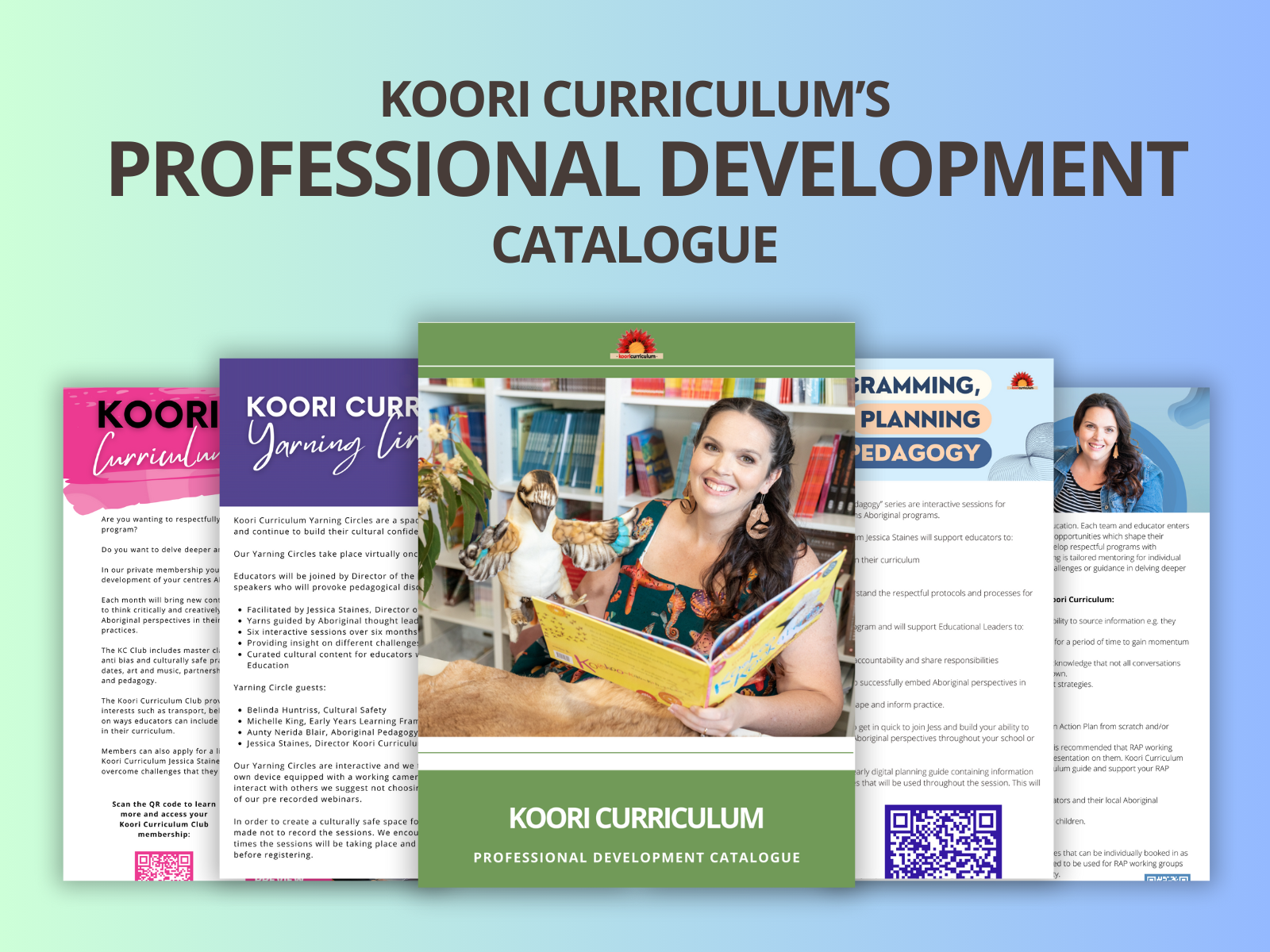
How Explore & Develop Narraweena Celebrated NAIDOC 2018
At Explore and Develop Narraweena, our NAIDOC celebrations continue all year round thanks to our vast outdoor settings. Our playgrounds are packed with natural elements connecting to land and sea including bark, plenty of trees, sand and native plants including Lomandra, Gumtrees and Mandarin trees (just to name a few!). This environment is not only loved and appreciated by the children and educators, it continues to be a home for many special animals including a Blue Tongue lizard, Kookaburras and plenty of bugs and insects. Our E&D Narraweena ‘ecosystem’ of nature has provided inspiration for many of the Indigenous experiences implemented during 2018 NAIDOC week, in particular the regular Kookaburras that come to visit.
Our service philosophy recognises the significance of cultural connections and states that: “We aim to provide for the changing needs of the local community, and to ensure the cultural diversity of our community is recognised, valued, respected, as well as actively encourage community participation within our centre.”

In light of our philosophy, many of our educators began their NAIDOC celebrations in the week prior to NAIDOC, participating in community events including a "Connecting with Country Through Clay" workshop at the Koori Curriculum Yarning Circle with Dr Red Ruby Scarlet, a weaving workshop at Manly, and the Women of Craft event at Barangaroo. This workshop opened up feelings of connection and belonging within the local community.
Other educators in the service were encouraged and took the time to participate in a personal research project on the NAIDOC theme of “Because of her we can”. Members of our team conducted research on significant and noteworthy Aboriginal women.
We are proud to have made a shift in our early learning program at E&D Narraweena this year and we have now encompassed the Aboriginal pedagogy of 8 Ways of Learning into our intentional teaching agenda. In light of this, many of the classroom projects had direct links to NAIDOC including The Froggies, our 3 – 4’s room whose project topic is Garigal Land and our nursery room who are studying connections to people and nature.
Though indigenous recognition is embedded into the day-to-day life at E&D Narraweena, NAIDOC week is seen as a particularly special time to come together as a service and plan extra activities and experiences for children and educators to be involved in. Across the different rooms in our service educators took time to plan experiences with respect and integrity of the Indigenous culture.

In our nursery rooms babies and toddlers put fine motor control into practice as they engaged in sensory experiences using playdough and natural resources. The babies pressed gumnuts and shells into yellow dough as they engaged with materials that represent the land and the sea. In the toddler’s room, children used indigenous artworks of Kookaburras as a provocation to re-create their own with playdough and feathers.
Both the babies and toddlers also spent time throughout the week watching the 2016 Song Line Vivid lights through a projector. They explored Aboriginal patterns and design as they were projected across the Opera House. These experiences offering the chance to develop respect and appreciation for Aboriginal art.

In the Kanga’s room, the 2 – 3 age group spent group times recognising native Australian Animals which are an inherent part of Indigenous culture. Educators conducted music and movement experiences in the sandpit, with the earth beneath their bare toes the children danced like Emu’s and hopped like Kangaroo’s. They also hunted for their own tapping sticks and spent time drumming to rhythms together. These special moments of engaging in traditional Aboriginal music and dance
Indoors, the children read books about Bilby’s and learnt about Aboriginal symbols through flash cards and sand drawing.

The use of stories and books to engage children in understanding NAIDOC, extended up into the 3 – 4’s room and they spent time during the week studying Koo Koo the Kookaburra after sightings of the native bird in our playground.
Their Garigal Land project this week, opened up conversations about the local community as they had group times discussing the question posed by educators “what would Garigal Land look would like from the moon?”.

Within their 8 ways of learning project, the pre-schoolers extended their project work on Feelings & Food to discover all about bush tucker, beginning with readingTuckerby Aunty Wendy. Much of the focus surrounded the women’s role of hunting and gathering and this topic of traditional Aboriginal food connected with the children and opened up the opportunity for conversation about food being a catalyst of family and friend relationships across all cultures. This study of Bush Tucker extended throughout the week and the children continued to make links between the traditional Aboriginal ways of eating and their own. After reading about the tucker in the Kimberly region, the pre-schoolers reflected on the Aboriginal practice of only hunting and eating what they needed and applied it in their own practice of having only a few servings of lunch so there is enough for everybody.

Our pre-schoolers also participated in a progressive Aboriginal storytelling exercise, that started with displaying Aboriginal symbols in the room and identifying them in paintings. Through their educator’s encouragement and support our 4 – 5year olds built the skills, from taking apart the symbols in artworks, to compose their own dreamtime stories.

NAIDOC will continue to be an ongoing celebration for us at E&D Narraweena. Throughout our service it is important to all of us that we remain diligent in our recognition of First Australia throughout our environment, philosophy and program. NAIDOC week 2018 has been a wonderful time to reflect our current practices and implement new and emerging ideas and experiences to the children. We will continue to nurture our children’s growth and recognition of the Australian Indigenous culture, as well as all cultures within their community.
Written by Abbey Gibson



